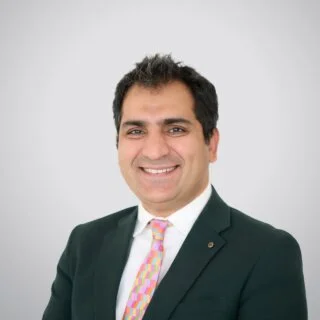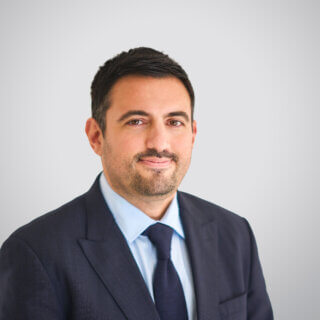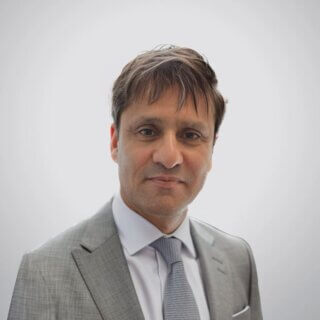King’s Cardiovascular Department
At King’s, we offer a comprehensive assessment of heart related symptoms using modern and state-of-the-art tools for the diagnosis. Our well experienced cardiologists layout a personalised management plan in agreement with patient in addition to tailor-made modifications of cardiac risk factors.
The most common Cardiac symptoms and issues are given below:
- Chest pain – Commonly it’s a heavy and central chest pain but it has several variants. Heart attack can be fatal if not treated and can cause debilitating complications if not treated soon enough. Therefore, no chest pain should be ignored, and one must seek expert advice promptly.
- Breathlessness – This could be an early symptom of a failing heart or of blocking arteries.
- Palpitation – Heart rhythm and rate can fluctuate abnormally and can be as low as lower than 40/min or as fast as 200/min plus. These must be investigated seriously and immediately.
- Collapse/Blackout – Issues with Heart Valves or electric system can lead to slow or sudden stoppage of the heart leading to collapse.
- High Blood Pressure– Although many people have headaches, high blood pressure may have no symptoms. If not treated, can lead to heart attack or heart failure.
- Abnormal Cholesterol Levels – Bad cholesterol deposits over the years inside the blood vessels making them narrowed. This ultimately blocks the vessel if not lowered with medicines and/or lifestyle changes.
- Coronary Artery Disease– is one of the common causes of death in the world and in the UAE. It can cause chest pain, breathlessness and sometimes has no symptoms. This must be and accurately diagnosed to guide further treatment.
- Heart Failure – This stage is irreversible but advances in medicine and devices can ensure reasonable exercise capacity and satisfactory long-term outcome.
- Valve Problem – This can be by birth or a result of ageing. Symptoms tend to appear in advance stages. Needs simple ultrasound to diagnose most of the time.
Above are few of the main presentations. However, if you feel you your symptoms are different yet may be related with the heart health, please contact us
Faqs
الأسئلة الأكثر شيوعا
Dr. Mehmood (Consultant Interventional Cardiologist), Dr. Omar Hallak (Consultant Interventional Cardiologist), Dr. Jose Carlos Moreno Samos (Consultant Interventional Cardiologist), Dr. Layla Al Marzooqi (Specialist Cardiologist & Aeromedical Examiner) and Dr. Ali K Moussavi (Specialist Cardiologist) are considered the best Cardiologists in Dubai.
A Holter monitor is a portable electrocardiogram (EKG) that monitors the electrical activity of an ambulatory patient’s heart for a period of 24 hours. It is often used when your doctor is suspecting an abnormal heart rhythm, often based on complaints of a sensation of a beating heart, palpitations or a fast heartbeat. Wires from the monitor are usually taped to the patient’s skin, and he/she then goes about their usual daily activities. The patient is then tasked with keeping a diary so the doctor can compare the results from the monitor with the patient’s symptoms.
Also called the transthoracic (across the chest) echo, it is a painless test that is used to observe the heart valves and chambers. It is not an x-ray, and it uses ultrasound high frequency waves so as to get a picture of all the four heart chambers and valves. This helps a cardiologist to detect any damage and disease in the heart. An echocardiogram is a non-invasive test that uses the same technology used to take an image of a fetus before birth. During this test, a transducer is used to generate images for interpretation.
Coronary artery disease is a chronic condition that causes the arteries that supply blood to the heart to narrow and harden. This narrowing leaves less room for blood flow, thereby depriving the heart muscle. The risk factors that contribute to the development of coronary artery disease include diabetes, smoking, high blood pressure, high cholesterol, lifestyle and family history.
This is a type of metal strut that is used to expand blockages in heart arteries and looks like small springs found in pens. They help stop heart attacks and relieve chest pain as well.
Atrial fibrillation (Afib) is one of the most common heart rhythm disorders whereby the heart beats rapidly and irregularly. Although A fib is not directly life-threatening, it can cause palpitations, other rhythm problems, shortness of breath, chronic fatigue, chest pain, stroke, and dizziness.
This is a small device that is implanted in the upper chest region for the prevention of an abnormally slow heartbeat. A slow heartbeat develops when the heart’s natural electrical conducting fibres wear out or when the heart’s natural pacemaker slows down with age.
A pacemaker system generally consists of a pulse generator that houses the pacemaker battery and circuitry as well as two pacemaker leads. The leads are usually inserted through the veins into the top and bottom chambers of the heart.
A pacemaker is implanted under local anesthesia and it can be completed within 1-2 hours. Patients with pacemakers can enjoy normal, active lifestyles with minimal restrictions.
It is not unusual for persons to have strong emotional feelings after going through an ordeal such as a heart attack. Heart attacks can occur suddenly in otherwise healthy people who are not accustomed to the idea of having to deal with any illness. This can sometimes trigger feelings of depression, irritability, hopelessness, and fear.
Any patient who is struggling with such emotions after a heart attack should discuss this with his/her doctor. Counseling and medication can help in removing this obstacle to good health. Also, joining a supervised cardiac rehabilitation after a heart attack can also be quite beneficial.
Consuming monounsaturated fats can improve your HDL as well as reduce bad cholesterol (LDL) and triglycerides. These include some types of vegetable oils, olive oils, avocados, and nuts. Some foods such as green peas, peanuts, sunflower seeds, and corn can also raise HDL. Other ways to raise the HDL include cessation of smoking, alcohol moderation, and regular exercise.
BOOK AN APPOINTMENT







